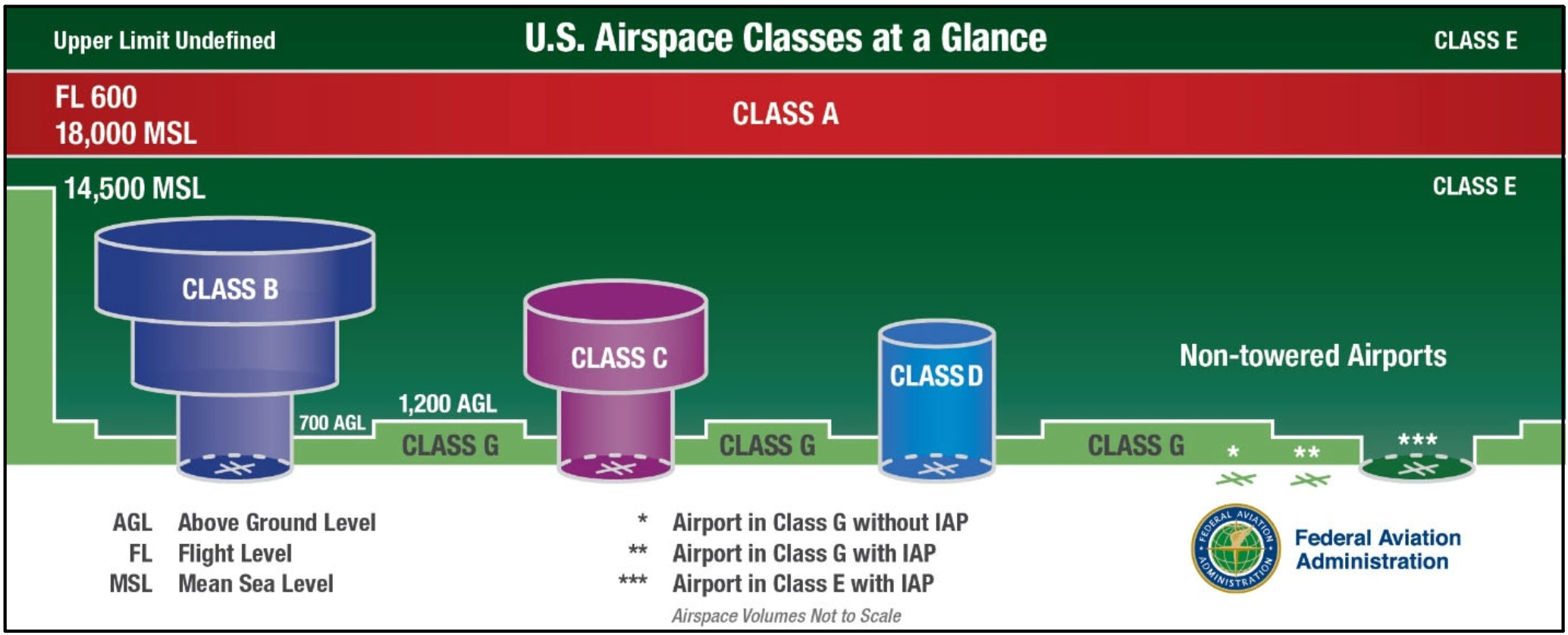Navigating the Sky: A Student Pilot's Guide to Airspace
 As a student pilot, understanding airspace is crucial for safe and efficient flight. The sky isn't a
free-for-all; it's a complex network of designated areas with specific rules and regulations. This guide will
introduce you to the different types of airspace you'll encounter during your training and beyond.
As a student pilot, understanding airspace is crucial for safe and efficient flight. The sky isn't a
free-for-all; it's a complex network of designated areas with specific rules and regulations. This guide will
introduce you to the different types of airspace you'll encounter during your training and beyond.
Why Airspace Matters
Airspace classifications exist to:
- Separate different types of air traffic: This prevents collisions and ensures smooth operations.
- Provide varying levels of air traffic control (ATC) services: From full radar control to advisory information, ATC services adapt to the complexity of the airspace.
- Protect sensitive areas: This includes military operations, national security zones, and areas with high concentrations of air traffic.
Understanding Airspace Classes
The United States utilizes a classification system of A, B, C, D, E, and G airspace. Let's break down each class:
Class A Airspace
This is the highest level of controlled airspace, extending from 18,000 feet mean sea level (MSL) up to flight level (FL) 600.
- All operations within Class A airspace require an instrument flight rules (IFR) flight plan and ATC clearance.
- 18,000ft MSL ≤ Class A ≤ FL600
Class B Airspace
Surrounds the nation's busiest airports.
- It's typically shaped like an upside-down wedding cake.
- Requires a specific ATC clearance to enter.
- Student pilots will need specific endorsements and training to operate within this airspace.
- Mode C transponder is required.
Class C Airspace
Surrounds airports with a radar approach control and a certain number of IFR operations.
- Typically consists of a core surface area and a shelf area.
- Requires two-way radio communication with ATC before entering.
- Mode C transponder is required.
Class D Airspace
Surrounds airports with an operating control tower.
- Typically extends from the surface to 2,500 feet above airport elevation (AAE).
- Requires two-way radio communication with the control tower before entering.
Class E Airspace
This is a catch-all category encompassing various controlled airspace not classified as A, B, C, or D.
- Class E can extend from the surface, 700 feet AGL, 1,200 feet AGL, or 14,500 feet MSL up to 18,000 feet MSL.
- Some Class E airspace does not require two-way radio communication, but operating inside it still requires following VFR and IFR regulations.
Class G Airspace
Uncontrolled airspace, where ATC has no authority.
- Extends from the surface up to the base of overlying controlled airspace.
- While there's no requirement for ATC communication, it's essential to maintain situational awareness.
Key Takeaways for Student Pilots
- Study your charts: Aeronautical charts are your best friend. They clearly depict airspace boundaries and altitudes.
- Communicate effectively: Always establish two-way radio communication when required.
- Plan ahead: Familiarize yourself with the airspace along your planned route.
- Ask questions: Don't hesitate to ask your flight instructor or ATC for clarification.
Understanding airspace is a fundamental part of becoming a safe and competent pilot. By familiarizing yourself with these classifications and regulations, you'll be well-prepared to navigate the skies with confidence.